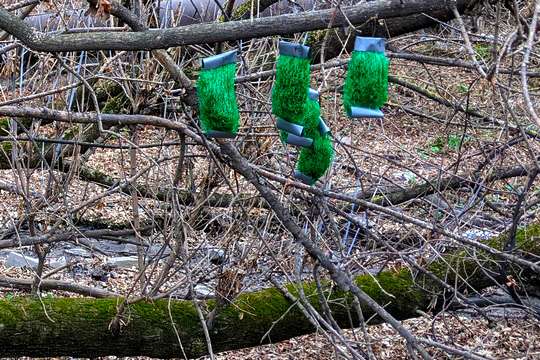Air pollution is one of the major problems of the 21st century, which affects the quality of the environment and human health. Pollution with heavy metals deserves special attention due to metals' high toxicity and persistence. Mosses are regarded as one of the main bioindicators of air pollution. Active monitoring is very simple to carry out, reliable and financially acceptable due to the low cost of material acquisition and it is commonly used in many countries of the world to assess pollution associated with heavy metals, polycyclic aromatic hydrocarbons (PAHs) or other organic pollutants. The technique is successfully applied in both in urban and industrial areas. The main purpose of the project is to assess the level of air pollution around one of the industrial interprises in Tula (Russia).
Tasks
1. Exposure of mos bags at different sites around the metallurgical plant for three months (this item is in progress)
2. Preparation of the literature review for the manuscript
3. Description of the analyzed zone
4. Determination of the content of the metal in exposed and control moss samples
5. Interpretation of the obtained results
Preliminary schedule by topics/tasks
1. Preparation of the literature review for the manuscript (February 14-March 1)
3. Description of the analyzed zone (March 2 - March 9)
4. Determination of the content of the metal in exposed and control moss samples (March 10-March 15)
5. Interpretation of the obtained results (March 15-March 25)
Required skills
Knowledge in analytical chemistry, environmental chemistry/physics and statistical analysis
Acquired skills and experience
- the participant of the project will have the possibility to participate almost in all stages of data analysis/interpretation and preparation of the manuscript, which can help him/her to plan further experiments:
- the new approaches of moss biomonitoring data interpretation will be developed;
- he/she will gain new knowledge about the methods of elemental analysis.
Recommended literature
1. Kosior G, Samecka-Cymerman A, Kolon K, Kempers AJ (2010) Bioindication capacity of metal pollution of native and transplanted Pleurozium schreberi under various levels of pollution. Chemosphere. 81:321–326. https://doi.org/10.1016/j.chemosphere. 2010.07.029 2. Aničić M, Tasić M, Frontasyeva MV, Tomašević M, Rajšić S, Mijić Z, Popović A (2009) Active moss biomonitoring of trace elements with Sphagnum girgensohnii moss bags in relation to atmospheric bulk deposition in Belgrade, Serbia. Environ Pollut 157:673–679. https:// doi.org/10.1016/j.envpol.2008.08.003 3. A. S. Sergeeva; I. Zinicovscaia; K. Vergel; N. Yushin, Aničić Urošević M. The effect of heavy industry on air pollution studied by active moss biomonitoring in Donetsk region (Ukraine). Archives of Environmental Contamination and Toxicology, 2021, https://doi.org/10.1007/s00244-021-00834-2



